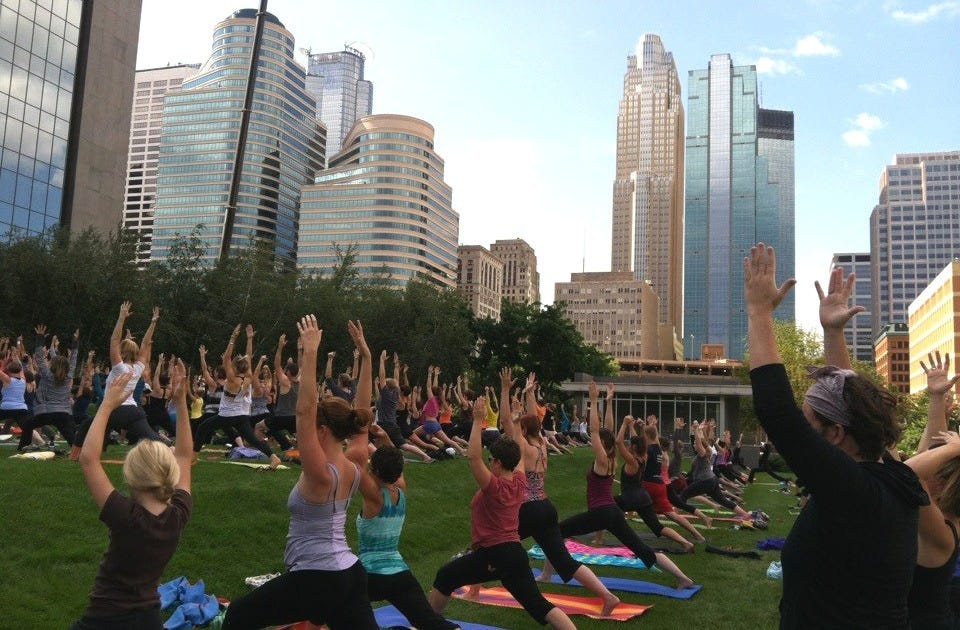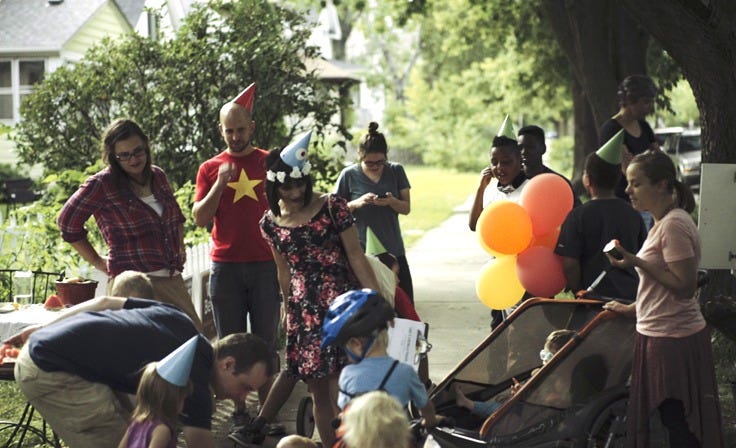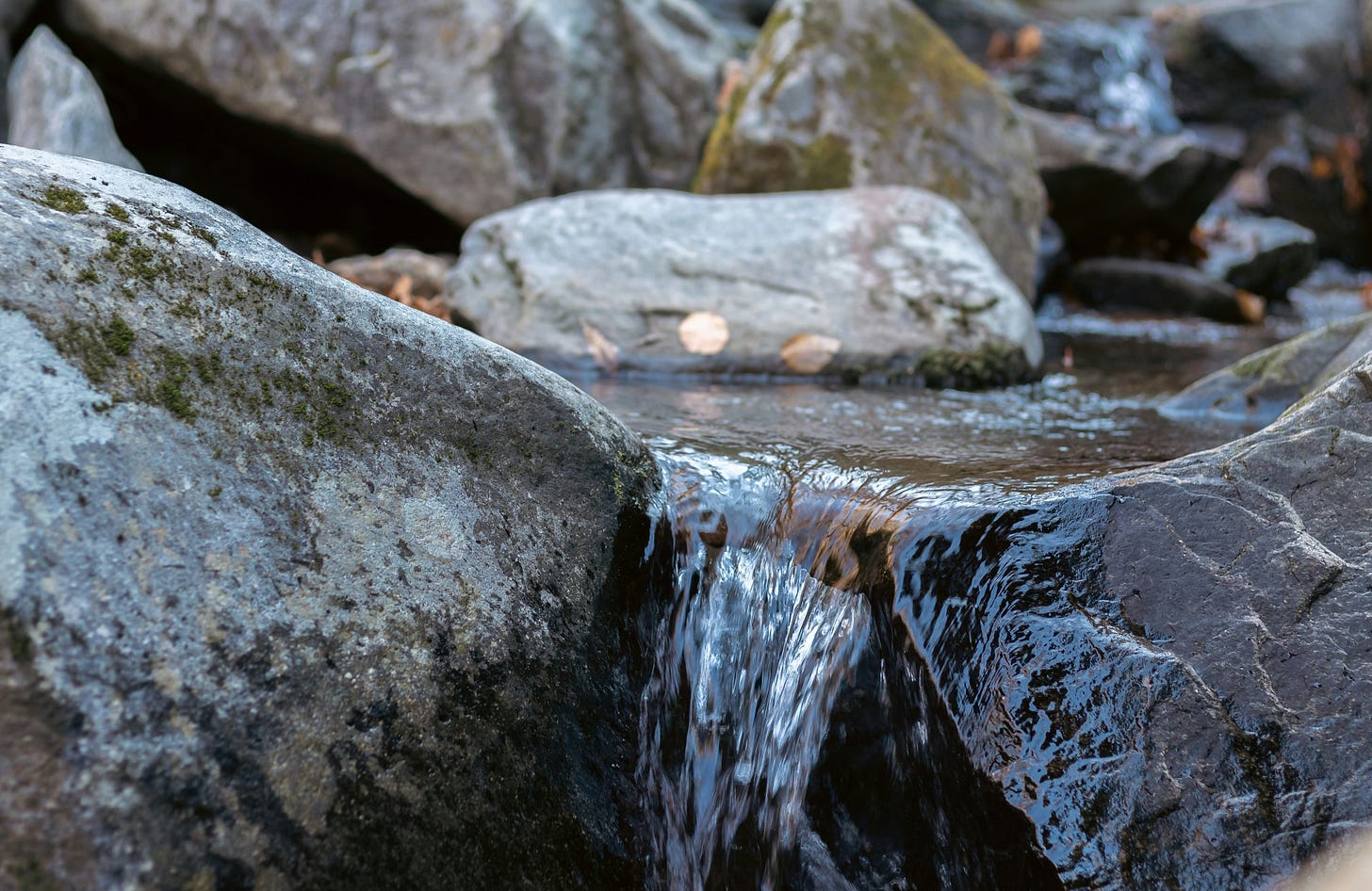Repeat, Repeat, Repeat!: Placemaking as Continuous Care
Step 7 of Transforming a Place Without Money or Authority
This newsletter is the final installment of a series on our seven-step placemaking process (what we like to call “how to get things done without a lot of money or authority”). If you missed the last part to this series, you can check it out here!

When you take on the challenge of improving your community’s places, you should embrace the mindset that the work will never be done. Projects are completed, but care is continuous.
As a society, we’ve fallen into the trap of thinking that the shaping of our places is a one-time, all-out burst of activity and change, and then the place will run itself in a static manner — or worse, there is one big burst of activity that dies completely after the initial effort. This mindset creates the foundation of failure and decline.
The best shared spaces are the ones that continually adapt and attune to the ever-changing needs of people (and ecology) who are in them and impacted by them. If you care about a place, you and your community will need to continue caring for and investing in it forever. It’s the infinite game we spoke of in part six of this series. You win when the game never ends.
This is the Practice of Place.
Never Stop Learning
This “game” may sound like a lot of hard work, and, yes, sometimes it will be. Maintaining a garden, your home, or relationships with people you care about also requires consistent effort, but the work is rewarding: giving begets receiving. And the good news is that here, you have a process you can follow that we’ve seen succeed time and time again. As renowned architect-builder Christopher Alexander says, “making wholeness heals the maker.”
With it, you’ll have the resources you need, and, most importantly, the time and autonomy to allow some experiments to fail and not have that derail the entire enterprise. You’ll be able to take those experiments for what they are: lessons that can be learned from, as opposed to problems that spoil everything. Moreover, you’ll be able to help other people see them as lessons and not problems. This is crucial, as the process will be sabotaged if you (likely) don’t have the capacity to fully do all the steps.
When others are onboard with the vision, it gives you space to let what you’ve tried cook for a while and make adjustments to the proverbial recipe. New productive avenues for action (that is, other steps to take) will appear that never would have shown themselves had you just done one big move, or stopped after one or a few small steps. You’ll discover an event gets more attendance if hosted at a different time, or that a bench is better placed to capture the shade at 3 p.m. rather than at 10 a.m. You’ll meet a visitor who turns into a super-promoting champion, or an impacted business or landlord will offer to support future rounds of improvements, given the positive impact they’ve already witnessed.
You’ll be able to separate the signals from the noise and consistently learn along the way, as well as track data and impact that will lead you to creating more of your own constituents to support your work moving forward. Additionally, you’ll build a stronger case to get more resources and buy-in from distant sources of authority and rules to support or even sanction a continuation of these efforts.
Data Will Continue to Be Your Ally
As a doer — whether a consultant, community activist, public servant, or landlord — you will want to continuously be collecting data, as it will give you a strong foundation to elevate your impact into greater things and even other efforts. When one line of momentum gives out on a specific project, having strong data you can point to will allow you greater flexibility to try other things on different fronts.
What does this mean, exactly? Well, if you’re a community activist or landlord who’s reliant on internal resources to make things happen, you’ll want to do this process and collect good data to figure out what works and enable the work to continue.
If you’re a consultant (like I am) and are reliant on clients to make things happen, then you need data to generate buy-in and resources from clients to continue serving the public. There have been many times when I’ve experienced a specific project (often conceived and funded as a one-time pilot) ending, and there was no additional funding for my involvement to continue, even though the project was successful. It’s painful to watch something wither not on its own merits but because of external factors. However, because there was good data, the dead-end projects allowed me to generate additional credibility and influence that I could translate to generating more projects, because I could show new clients that my method worked.
Even for landlords and community activists, while the work will go on for as long as you and your collaborators are willing and able to continue doing it, interest and abilities shift over time and developing a well of credibility only serves to keep the momentum going.
In short, this process easily translates across different types of shared spaces. You can take what you’ve learned in one place and use it to keep making change and improving people’s lives elsewhere, beyond your initial project.

Nothing Sells Like Success!
People like to invest time and energy into things that work. That’s another benefit of following this process: if you are able to get a long enough runway, you’ll be able to show that, no matter how small the effort was, you were able to do something that worked.
That’s a far more enticing selling point than just offering up an idea that sounds good, at least to you. Recall our previous discussion of hypotheticals: not everyone will be able to see your vision if you have nothing tangible you can point to as evidence. When an argument ensues, the person with the most power and authority in the situation will inevitably win, and that person, unfortunately, is rarely going to be you as the changemaker.
Start out instead with a small pilot project, and let it snowball and open the door for greater and more positive change down the road. For example, the month-long Living Room Station project we discussed in our last post is what led us to get the two-year-long Central Station project that we’ve continually referenced throughout this series. Similarly, and likewise referenced in the last post, our work on the SPS Commerce Tower led to the Capella Tower, which then led to us improving common areas for six-million square feet of office and industrial space.
Final Thoughts
My hope is that, with this series, I’ve offered you a new set of tools that will help you better perceive and overcome the obstacles you will inevitably face if you take on the job of making a place better.
I’ve done this process hundreds of times and distilled the method through trial and error: it’s not a practice based on theory, it’s a theory based on practice. I wrote it all out in the first place because my firm was doing the same things over and over, somewhat in a sequence, and it worked, so my staff wanted me to describe what it was we were actually doing. Clarifying the exact steps we were doing helped my team understand the method to our madness and run iterations of these cycles within their own projects.
Now I’m sharing it all with you, in the hopes that it will help you do this work more effectively, too. It’s frustrating when projects don’t work or stall out — believe me, I know. This 7-step process was forged through the experience of disappointment, anger, and disillusionment that everyone who does this work feels at some point. It can often bring a very real emotional toll.
I can’t promise that some degree of that burden won’t still be there if you follow this process, but it’ll be lessened considerably because you’ll be actively generating positive momentum and taking steps to avoid community burnout by you and the community you’re working with. You and the people around you won’t feel like nothing is getting done. You’ll still face objection and uncertainty, but you’ll be more like water finding its way through and around obstacles, flowing without collateral damage to yourself and others.

And, perhaps most importantly, you and the people who join in your cause will be happier doing this work, which is essential for it to keep going. And the continuation of the work is what brings places to life.
Good luck, and if you’ve made it this far in the series, consider sharing it with someone else! It would not only help me out as I try to reach more people who want to make their places better, but it could also inspire someone who wants to take that first step into this work, yet doesn’t know where to begin.
Repeat!
